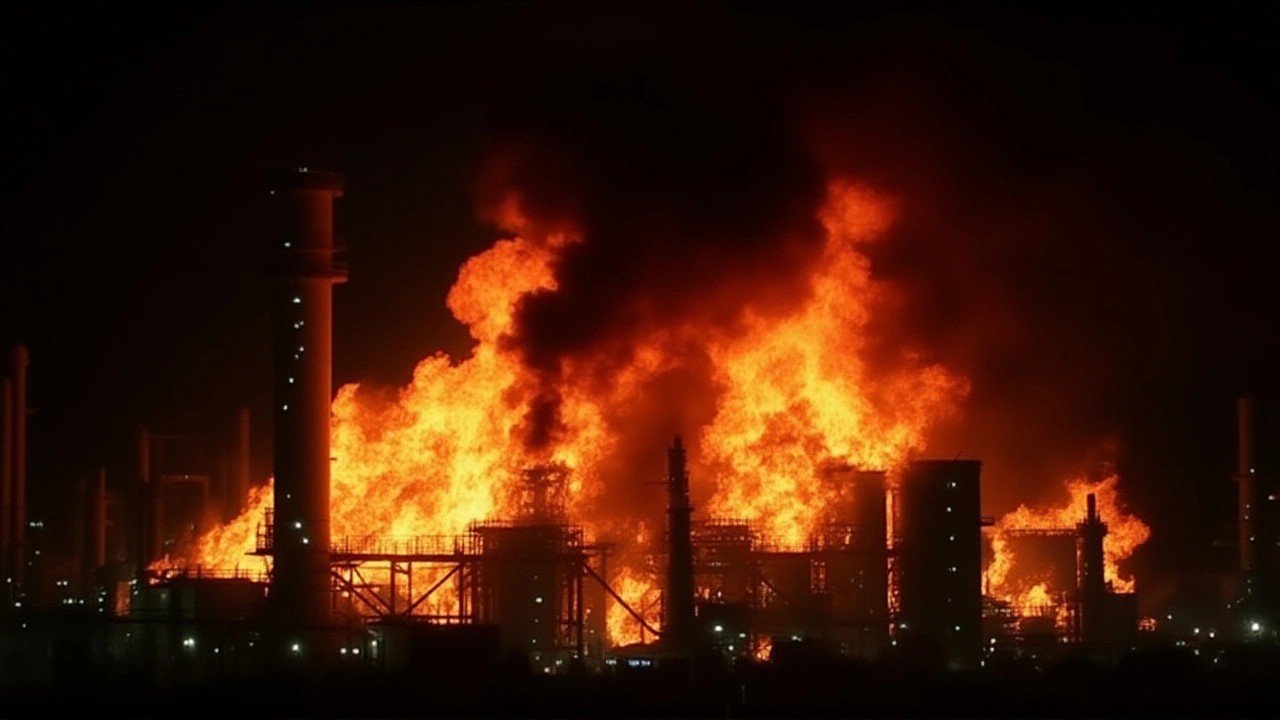At about 9:32 p.m. on Thursday, October 2, 2025, a massive explosion ripped through the Chevron refinery in El Segundo, California, igniting a towering fireball that lit up the night sky.
The blast ripped a hole in a jet‑fuel production unit, sending flames soaring over the 1,000‑acre complex. By dawn the next day, the blaze was largely contained, though orange tongues of fire still licked the horizon.
Historical Context: A Century‑Old Energy Hub
Opened in 1911, the El Segundo refinery is the state’s second‑largest oil‑processing plant. It churns out roughly one‑fifth of all motor‑vehicle fuel for Southern California and about 40 % of the region’s jet fuel, making it a linchpin in the West Coast’s energy supply chain.
Because California operates with a comparatively tight refining margin — the state imports hundreds of thousands of barrels of gasoline daily to meet demand — any hiccup at this site reverberates quickly across the market.
Immediate Developments and Light Shows
The fire’s brilliance was visible from Pepperdine University’s main campus in Malibu, more than 20 miles away, prompting startled students to film the inferno on social media.
Residents within a half‑mile radius reported hearing a thunderous boom and feeling the ground tremble. A few families evacuated their homes as orange‑colored smoke rolled through the neighborhood.
Responses From Authorities
The El Segundo Fire Department dispatched multiple engines and a water‑dropping helicopter. Crews battled the fire through the night, and by Friday morning the main blaze was declared under control.
“We’re monitoring the situation closely and will keep the public informed,” said a department spokesperson, underscoring the coordinated effort to prevent the fire from reaching the refinery’s storage tanks.
Economic Impact: Gasoline Prices in the Crosshairs
Economist Severin Borenstein, faculty director of the Energy Institute at UC Berkeley, warned that the incident could jolt wholesale spot prices within days.
"Fires of this magnitude typically send spot gasoline prices soaring, and those spikes filter through to the pump within a few business days," Borenstein explained. He added that if the refinery remains offline for several weeks, gasoline prices could climb by 10‑15 cents per gallon in the Los Angeles basin.
Statewide, the loss of even a single unit can shave off roughly 1 % of daily gasoline output, a figure that feels larger when the market is already tight.
Supply Chain Ramifications
California’s limited refinery capacity forces the state to rely heavily on imports. Even if existing fuel inventories temporarily cushion the blow, additional shipments from the Gulf Coast or overseas take up to a month to arrive.
Analysts note that the timing is especially delicate because the region is approaching its summer‑peak driving season, when demand for both gasoline and jet fuel climbs sharply.
Looking Ahead: What Comes Next?
Investigators have not yet released a cause for the explosion, but the refinery’s operators are expected to conduct a thorough safety audit before restarting the damaged unit.
In the meantime, the California Energy Commission is reviewing contingency plans, and the California Public Utilities Commission may consider temporary waivers to allow additional fuel imports.
- Explosion time: 9:32 p.m., Oct 2, 2025
- Location: El Segundo, California
- Refinery output: ~20 % of regional gasoline, 40 % of jet fuel
- Potential price impact: +10‑15 ¢/gal if offline >2 weeks
- Visible from: Pepperdine University (Malibu)
Frequently Asked Questions
How will the fire affect gas prices for everyday drivers?
If the refinery stays down for more than a week, analysts expect wholesale gasoline prices to rise 3‑5 %, which usually translates into a 10‑15 cent per‑gallon increase at the pump in the Los Angeles area. The effect could be felt as early as Thursday‑Friday.
What caused the explosion at the Chevron plant?
Authorities have not released a definitive cause yet. Early speculation points to a malfunction in the jet‑fuel processing unit, but a full investigation by the California Division of Occupational Safety and Health (Cal/OSHA) is still pending.
Will the refinery be able to resume operations quickly?
Chevron says it will conduct a comprehensive safety review before restarting the damaged unit. Even with a quick assessment, repairs could take several weeks, depending on the extent of the damage to the jet‑fuel infrastructure.
How are state officials responding to the supply shortfall?
The California Energy Commission is monitoring fuel inventories and may approve temporary waivers to allow additional gasoline imports. The Public Utilities Commission is also reviewing its emergency fuel‑supply protocols.
Is there a risk of similar incidents at other California refineries?
California’s refineries operate under strict safety standards, but the state’s aging infrastructure and high seismic activity mean that rigorous inspections are essential. Officials say this event will spur a broader review of plant safety across the network.
